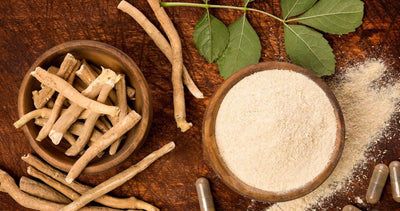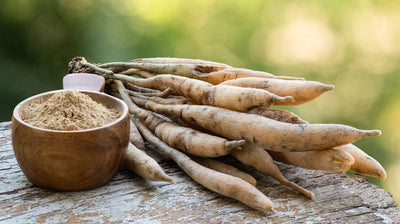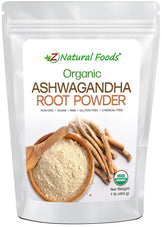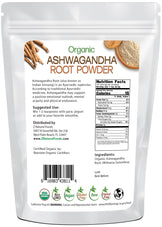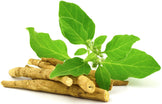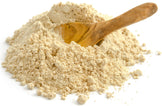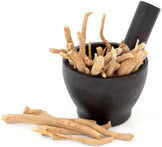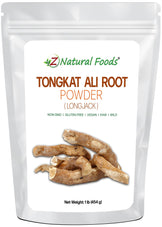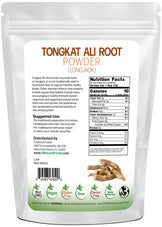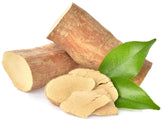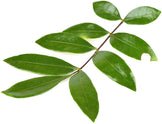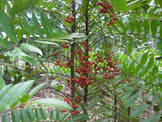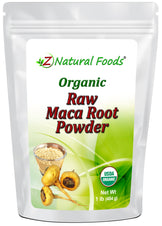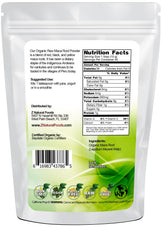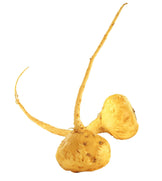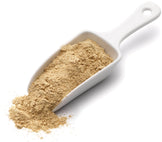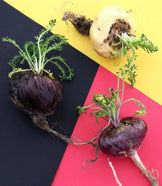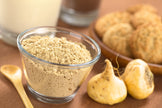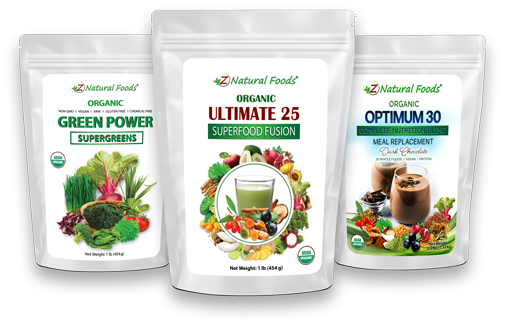Description
Description
Many countries have a traditionally used herb or tonic for supporting overall well-being, which they tout as their local “Ginseng” (even though there is no actual relation to the ginseng family).
For example,
- Maca root is known as Peruvian Ginseng, and
- Tongkat Ali is known as Malaysian ginseng.
- Well, Ashwagandha is no exception to that rule.
Known as Indian Ginseng, Ashwagandha is a member of the exclusive category known as adaptogens.
It has gained popularity in the West due to its potential to support one’s ability to adapt to daily stressors. Human studies confirm an impressive list of nourishing qualities and benefits of this extraordinary adaptogen.
Before we discuss the remarkable properties of Ashwagandha, it is essential to define what true adaptogens are and their purpose.
Adaptogens Defined
Adaptogens are classified as management and supportive herbs and fungi because the benefits are widespread through nonspecific physiological responses. What makes all adaptogens unique is their ability to adapt to the harsh conditions in which they are grown.
This adaptability allows them to thrive and become robust plants. As the research on adaptogens has been compiled over the years, herbalists and scientists have learned and concluded how each adaptogen's energy (warming, cooling, drying, moistening)and constituents balance has allowed them to be used in a more specific targeted approach.
Harvard aging expert Dr. David Sinclair believes in the importance of eating what he calls “stressed-out plants” because science has proven that highly stressed plants will produce more defense mechanism compounds like polyphenols. In simple terms, the use and function of adaptogenic herbs support the body's ability to have a healthy stress response.
Plants and fungi are often categorized based on their functional qualities. Unfortunately, many plants and fungi are called adaptogens even though they don’t fulfill the criteria that define an adaptogen.
Therefore, it is essential to understand the requirements for how an adaptogen is defined and how it works. The following are primary points that describe what a plant or fungi must do to be considered an adaptogen.
Adaptogens must:
- Be nontoxic at clinical dosage
- Increase the resistance of the hormonal and immune systems to all kinds of stressors through a nonspecific physiological response.
- Normalize body function no matter how external stressors have altered them.
Many herbs not classified as true adaptogens can (on some level) fulfill the above criteria. For example, Maca root and Holy Basil are not true adaptogens but fulfill many aspects of the adaptogen criteria. Therefore, they are considered possible adaptogens.
How do adaptogens work?
We have learned that the essential factor that makes a plant an actual adaptogen is that it must work through one or both of the body’s master control systems.
1) The HPA Axis (Hypothalamic-Pituitary-Adrenal Axis) is a complex system of neuroendocrine pathways and feedback loops that maintain and support homeostasis in response to chronic stress. The HPA axis interfaces the endocrine, nervous, immune, digestive, reproductive, and cardio systems.
2) The SAS (Sympatho Adrenal system, aka fight or flight) is a complex system that connects the sympathetic nervous system to the adrenal medulla. In simple terms, it is our fight-or-flight response. A triggered response floods our system with adrenalin and releases hormones epinephrine and norepinephrine from the adrenal medulla. This response increases blood pressure, blood sugar, and heart rate and suppresses digestion. This releasing of hormones and redistribution of blood allows the mind and body to respond and survive.
3) In the early 2000s, we learned through preliminary animal and in vivo research that adaptogens also work on a “cellular level.” It seems that adaptogens may support the upregulation of what are known as “molecular chaperones,” like heat shock proteins. Molecular chaperones are any protein that interacts with, stabilizes, or helps another protein to maintain its structure. They are known for their role in protein maturation, re-folding, and degradation.
Heat shock proteins are upregulated in the presence of stressful stimuli. The body is signaled that stress is coming, so to prepare, it increases the production of these remarkable compounds, which inhibit addiction, reduce pain, prevent protein misfolding, and increase neuroplasticity, just to name a few.
Stress also increases the production of stress hormones like cortisol. Human research has shown that adaptogens may also support healthy cortisol levels and prevent elevated cortisol-produced mitochondrial dysfunction.
In the end, there are only nine “true” adaptogens:
- Asian Ginseng,
- American Ginseng,
- Ashwagandha,
- Eleuthero,
- Schisandra,
- Rhodiola,
- Rhaponticum,
- Shilajit, and
- Cordyceps.
Calming vs. Stimulating Adaptogens
It is essential to note that adaptogens don’t subscribe to a one-size-fits-all concept. If you require using adaptogens, looking at the individual, not the condition, is critical. Not every adaptogen is suitable for everyone.
Like all other plant medicines, individual adaptogens have their unique qualities. They can be nourishing, warming or cooling, stimulating or calming, moistening or drying in nature. Depending on the species and where they are grown can also affect one’s results, and looking at the individual's personality traits is exceptionally vital when choosing the correct adaptogens.
For example, stimulating adaptogens may be a good choice if you lack mental and physical stamina. Red Ginseng and Rhodiola are the most stimulating adaptogens but work quite differently. Red ginseng is warming but also deeply nourishing. The nourishing quality helps balance the stimulating quality.
Rhodiola is not nourishing at all. It is very invigorating and drying. Therefore, (as an individual entity) Rhodiola may not be a good choice for those who get easily overstimulated or suffer from a drying condition known as a Yin deficiency in traditional Chinese medicine. It is important to note that while Siberian Rhodiola seems to exacerbate those issues, Tibetan Rhodiola does not. Therefore, the devil is in the details.
Calming adaptogens support a sense of calm and are for those who need support due to a high-stress lifestyle. Calming adaptogens are primarily but not exclusively for those who need to rebuild vital energy but are not necessarily low on vital energy. The effects of these adaptogens build over time. Ashwagandha is a perfect example of a calming adaptogen and is considered one of the best tonic herbs in traditional Ayurvedic medicine.
When combined with Black Cohosh and kava, Ashwagandha also acts as an antispasmodic. According to TCM (Traditional Chinese Medicine) principles,
Ashwagandha is a warming and acrid Yang tonic with a particular affinity for the kidneys. It also has Shen qualities due to its ability to calm the mind. Because TCM recognizes its protective qualities, Ashwagandha is also considered a Qi-tonifying herb supporting defensive Qi.
Misconceptions about adaptogens
One of the greatest misconceptions in herbal medicine is our unrealistic expectations regarding what we should feel when using an herb (especially adaptogens) for an extended period.
This misconception happens because many believe all herbs (regardless of category and the plant parts used) will give similar results. For example, an herb considered medicinal (like echinacea) is often used for a specific period. Based on the parts the plant used in the product and other herbs it may be combined with to support specific mechanisms of action, there are no particular benefits for using it long term.
Therefore, when the desired effects are achieved, it is unnecessary to continue using it. Then there are what I like to call gateway herbs. These singles or formulas can be used for an extended period or on an as-needed basis and have very noticeable positive effects in a short period, like the herb Kava root.
On the other hand, adaptogens produce what are known as “nonspecific responses” and are commonly used for extended periods. With adaptogens, it is not uncommon to see favorable responses (specifically an increase in energy and stamina) after a reasonable period. What is often misunderstood is believing that the progression you saw at the beginning continues to work in a linear manner. Because adaptogens support your ability to sustain a balanced state of well-being, once your body gets to that point, its job is to maintain it.
This better overall feeling of well-being is your new normal. We use adaptogens for an extended period to maintain those well-being levels. Therefore, expecting to continue seeing those initial responses or believing the herb is no longer working is misguided.
Think of it like blood pressure medication. Its job is to restore your blood pressure to a normal, healthy range. Once achieved, the medication doesn’t keep lowering your blood pressure; it maintains your new healthy levels. If it did continue lowering your blood pressure, you would be dead.
Another misconception is how a specific herb or category of herbs develops a reputation regarding their relationship to particular conditions specific to one gender based on misunderstood results. It is not uncommon to read a study about how one specific herb “raised” testosterone or balanced estrogen levels, drawing conclusions about these results without taking a closer look at how they came about.
Ashwagandha is often spoken about regarding its ability to raise testosterone levels. While this is true in a general sense, these are the two things you only learn if you have read the research.
First, the term “boost” is often used when describing the effect ashwagandha has on testosterone levels. This gives the impression that it will bring your levels through the roof. The truth is that it helps people who have low testosterone levels get back into a normal healthy range.
For example, (generally speaking) if you have a total testosterone level of 200 and an average level for your age is around 600, don’t expect that it will bring your levels to 900. Studies have shown that through the following mechanisms of action, Ashwagandha may support the body's ability to reestablish and maintain healthy levels.
- Supports healthy stress levels by inhibiting cortisol release
- Supports healthy DHEA-S levels, which converts estrogen into testosterone
- It may support oxidative stress levels, which may decrease sperm count and cause DNA damage to sperm.
Ashwagandha: A True Adaptogen
If you are a phytochemistry fan, there are three main active constituent groups present in ashwagandha:
- alkaloids
- lactones
- saponins
Withanolides (lactones) are a group of compounds found in Ashwagandha that may support its ability to respond to external stressors healthily and work as an immune amphoteric. The two main lactones that are believed to contribute to its effects are Withaferin A and Withanolide D. Other active constituents in Ashwagandha that have been classified as “anti-stress” agents are sitoindosides and acylsterygulcosides. While some ashwagandha preparations on the market combine the root and leaf, the root is the portion of this botanical that is most traditional, primarily used, and known for its adaptogenic properties.
In one study, Effects of Ashwagandha on stress manifested anxiety; The treatment group showed a “significant reduction” in “scores on all stress assessment scales.” An even more impressive result was the reduction in serum cortisol levels.
In conclusion, Ashwagandha is a well-researched, well-respected, time-tested, and proven adaptogen used to support and optimize longevity and well-being by supporting nonspecific physiological responses resulting in a healthy stress response.
If used appropriately, Ashwagandha can be another positive tool, allowing us to live happier and healthier lives.
For more information about our Organic Ashwagandha Root Powder, go here:
To review all of our Herb and Root Powders, go here:
